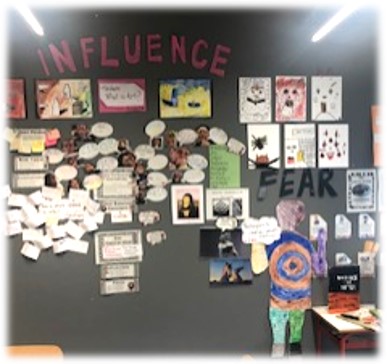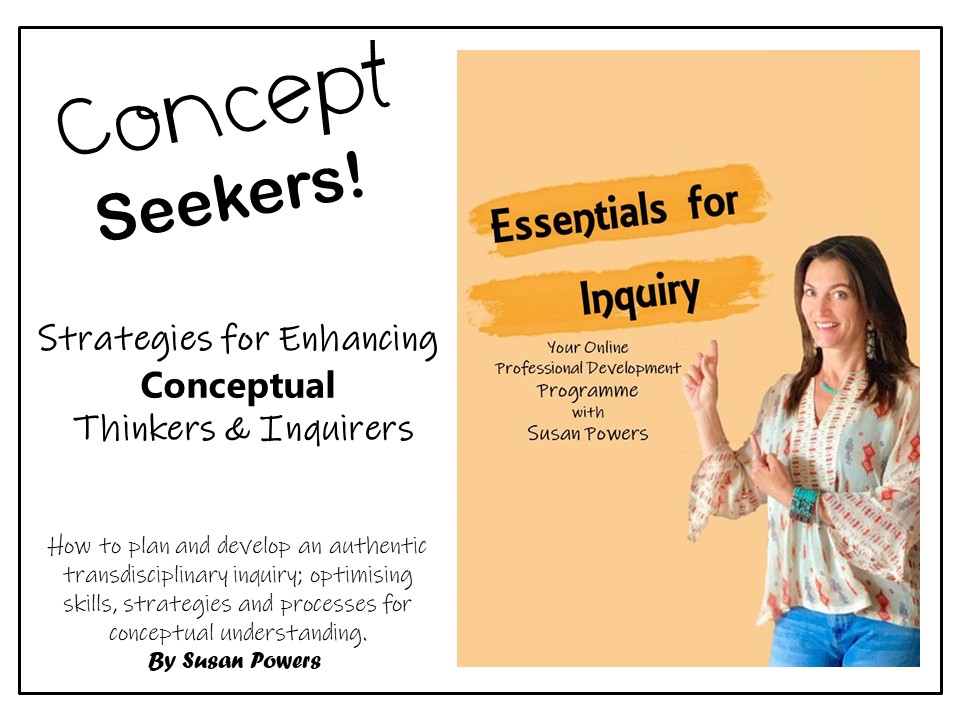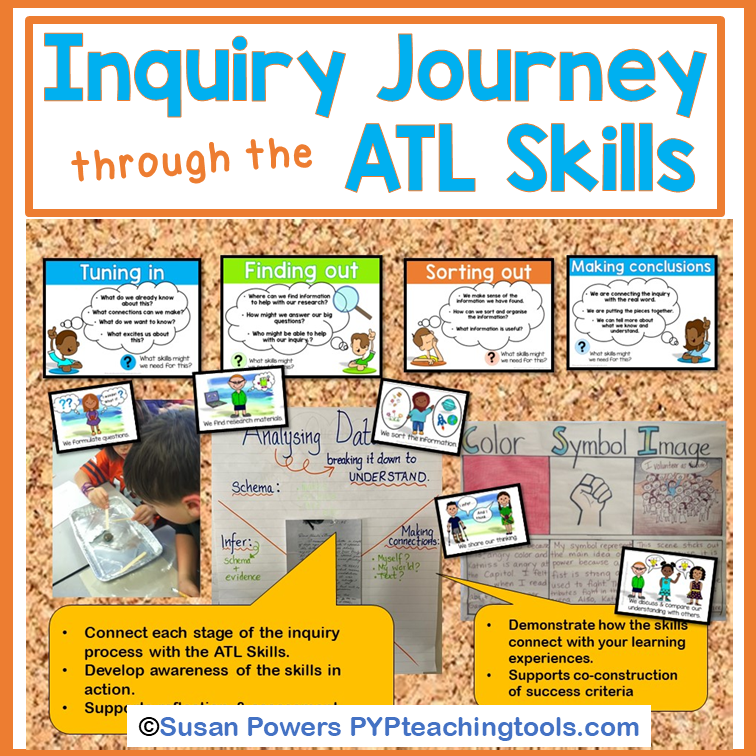Learning Walls That Breathe Inquiry: Making ATL Skills Visible in the PYP

Learning Walls That Breathe Inquiry: Making ATL Skills Visible in the IB PYP Classroom
Learning walls are living, breathing spaces for inquiry. They go far beyond decoration. They act as a third teacher, shaping thinking, talk, and reflection. Over my years as a PYP teacher, I’ve learned that when the classroom environment becomes a partner in learning, it transforms how children see themselves as thinkers, questioners, and collaborators. Please enjoy the examples of my inquiry boards/learning walls from my classroom over the years. Ive linked the units of inquiry below, if you'd like a closer look.
- A Science Inquiry into Ocean Life: Ecosystems, Interdependence, Connection
- Adaptations of Living Things
- Who We Are: Identity, Beliefs & Values
- How We Express Ourselves: Arts, Influence, Behaviour
What Makes a Learning Wall Come Alive?
A true learning wall is organic and flexible, evolving as learners’ questions, discoveries, and understandings grow. It’s not a teacher-owned display but a co-constructed learning space—built with students, not for them.
Every sticky note, question card, and reflection becomes a visible trace of thinking. Learning walls make learning visible. They connect the dots across subjects, invite ongoing dialogue, and capture the voice and agency of learners.
When designed intentionally, they become dynamic tools for meaning-making—a reflection of both process and progress. In an inquiry classroom, they’re not just “great” or “useful”—they’re vital.
As Jess Vance reminds us in her book, Leading with a Lens of Inquiry, authentic inquiry is about empowering learners to take ownership of their thinking. Learning walls do exactly that. They help children see their own growth and contribute to a shared narrative of understanding.
The Learning Wall as a Process, Not a Product
Too often, displays become static. Beautiful, but silent.
A living learning wall, however, evolves alongside your unit of inquiry. It mirrors the inquiry cycle:
Tuning In → Finding Out → Sorting Out → Going Further → Taking Action → Reflecting
Each stage can be mapped to the Approaches to Learning (ATL) skills, helping students connect how they are learning to what they are learning.

Example of Inquiry Cycle Connections
-
Tuning In:
Thinking and research skills help students generate questions and wonderings. Capture these in a “What We Wonder” section. -
Finding Out:
As students investigate, communication and research skills shine. Add vocabulary, key facts, and visuals to represent new discoveries. -
Sorting Out:
Thinking and self-management skills come into play as learners organise information and make meaning. Post concept maps or anchor charts here. -
Going Further:
Students collaborate using social and communication skills to extend their inquiries and explore new perspectives. -
Taking Action:
This section celebrates how learning moves beyond the classroom as your students might share solutions, designs, or advocacy projects. -
Reflecting:
Thinking and reflection skills bring learning full circle. Encourage students to post self-assessments or personal growth notes.
A living wall that mirrors this process shows that inquiry isn’t linear or tidy but it’s layered, cyclical, and deeply personal.😊
Integrating ATL Skills Through the Inquiry Cycle
To make these connections visible and structured, I created the
👉 IB PYP Inquiry Cycle through the ATL Skills Interactive Bulletin Board.
👉Find the big kids version right here.
This resource helps teachers transform their classroom displays into interactive, guided visuals of inquiry-in-action. Each part connects the inquiry stages with the ATL skills, making learning behaviours visible, tangible, and student-owned.
Here’s How I Use It in My Classroom
-
Launch the Wall at the Start of the Unit
-
Introduce the inquiry cycle and ATL skills with visual cards, showing the children how those skills are put into use daily.
-
Invite your students to help plan where each phase will live on the wall.
-
-
Build the Wall Together
-
Add artefacts of learning: sticky notes, quotes, concept maps, or photos.
-
Tag each contribution to an ATL skill category that you are focusing on within the 4-6 weeks of your inquiry. (communication, thinking, social, research, or self-management).
-
-
Keep It Interactive
-
Dedicate weekly reflection time:
-
“What new questions have emerged?”
-
“Which ATL skills are helping us most right now?”
-
“Where do we see growth?”
-
-
Rotate student roles for maintaining and updating the wall.
-
-
Use It for Reflection and Assessment
-
End the unit with a “gallery walk” of the wall.
-
Students can identify which ATL skills they developed and how they used them.
-
Use these insights in student-led conferences or reflections.
-
Practical Ideas to Bring ATL Skills & Learner Profile Into Your Learning Wall
Here are simple ways to embed ATL skills into your inquiry environment:
-
Colour-Code the ATL Skills & LP Attributes:
Assign colours for each skill category and use them across wall headers, journals, and planning charts. This supports your students developing awareness of how the skills overlap and are interdependent throughout the inquiry process. -
Student-Created Icons:
Have students design icons for each attribute and ATL skill to personalise the wall. -
Visible Thinking Routines:
Combine routines like See–Think–Wonder or Connect–Extend–Challenge with reflection prompts tied to specific skills. Notice the example above with COLOUR-SYMBOL-IMAGE -
Inquiry Question Pathways:
Map how early wonderings evolve into deeper conceptual questions. -
Action Gallery:
Dedicate space to showcase your student-initiated or teacher-guided actions connected to learning outcomes. -
Journal Connections:
Encourage students to reference the wall when reflecting in learning journals or goal-setting sheets.
Why Learning Walls Matter in the PYP
When we treat our learning environments as active participants in the inquiry process, we empower students to take ownership of their learning journey.
A living learning wall:
-
Encourages curiosity and sustained questioning
-
Makes thinking and reflection visible
-
Promotes ongoing formative assessment
-
Strengthens collaboration and dialogue
-
Builds metacognition and learner agency through ATL skill language

The PYP reminds us that how we learn is as important as what we learn. By weaving ATL skills into the inquiry process and by making them visible through our classroom environments, we nurture learners who are self-aware, reflective, and ready to take action in their world.
Learning walls remind us daily that learning is alive. It grows, shifts, and belongs to everyone in the room.
Resource Mentioned
IB PYP Inquiry Cycle through the ATL Skills Interactive Bulletin Board
Transform your classroom into a living reflection of inquiry—where ATL skills and student agency thrive.
👉 Inquiry Cycle & ATL Skills Learning Wall for Big Kids
👉Inquiry Cycle & ATL Skills Learning Wall for K-2
Suggested FURTHER Reading:
- Enjoy!

P.S. If you're looking for further support with developing a transdisciplinary approach in your classroom, be sure to watch the FREE webinar Concept Seekers: Practical Strategies for Enhancing Conceptual Thinkers & Inquirers





